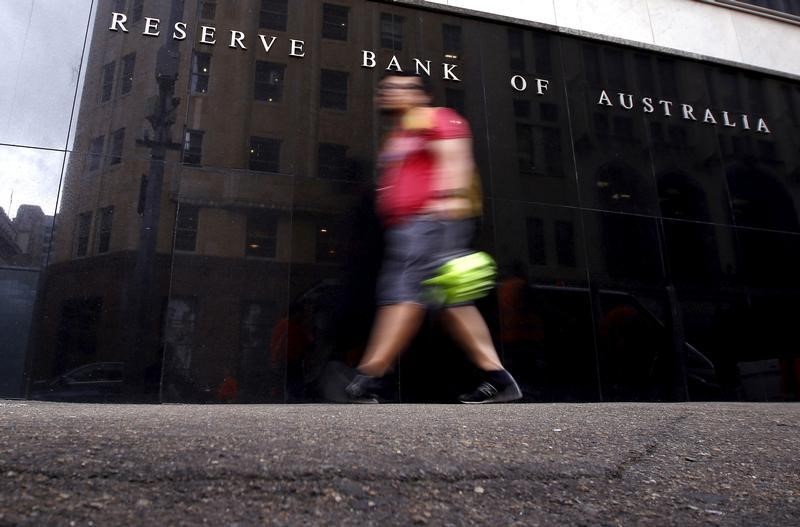By Ian Chua
SYDNEY (Reuters) - Australia's central bank members discussed leaving interest rates on hold earlier this month, but decided in the end that a cut would help return inflation to target over time.
Investors were quick to temper expectations for a follow-up policy easing in the near term and sent the Australian dollar up more than half a U.S. cent to a session high of $0.7368 <AUD=D4>.
"On balance, members were persuaded that prospects for sustainable growth in the economy, with inflation returning to target over time, would be improved by easing monetary policy at this meeting," minutes of the May 3 policy review revealed.
At that meeting, the Reserve Bank of Australia (RBA) reduced the cash rate by a quarter point to a record low 1.75 percent.
Su-Lin Ong, senior economist at RBC said the minutes confirmed the decision to cut rates was a "line-ball call."
"The market will derive from this that another cut near term is unlikely. But we're not sure that is the right conclusion."
The minutes showed the central bank was mostly concerned about surprisingly soft inflation last quarter.
"Although the March quarter outcome for the CPI reflected some temporary factors, the broad-based softness in prices and labor costs signaled less momentum in domestic inflationary pressures than had previously been expected," the minutes said.
The RBA noted there had been no material change in its outlook for growth and was still of the view that the economy was continuing to rebalance away from the mining sector, thanks to "very accommodative" monetary policy and a lower exchange rate since 2013.
The minutes gave little away on whether the RBA would cut rates again.
In its quarterly monetary policy report published a few days after the rate decision, the RBA slashed its 2016 underlying inflation forecasts to below its target band of 2 to 3 percent, prompting investors to bet on at least one more cut in interest rates this year.
In the wake of the minutes, interbank futures <0#YIB:> trimmed chances of a near-term move in rates with markets now giving a 60 percent chance of a cut by August, down from 76 percent.
The minutes appear to support the view that the RBA only ever intended to cut rates once and it was just deliberating the timing, said Paul Dales, Australia & New Zealand economist at Capital Economics.
"We disagree and believe that rates will be cut to 1.5 percent at the August meeting."
